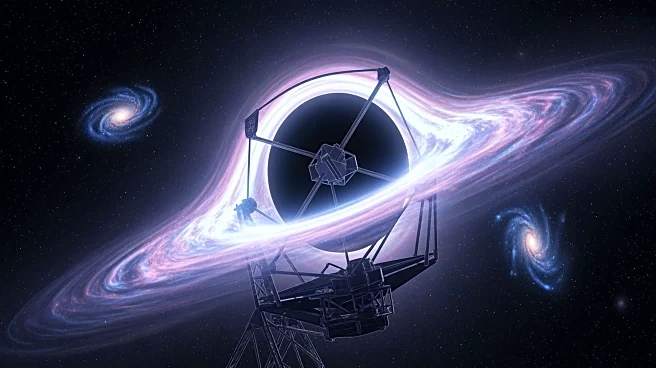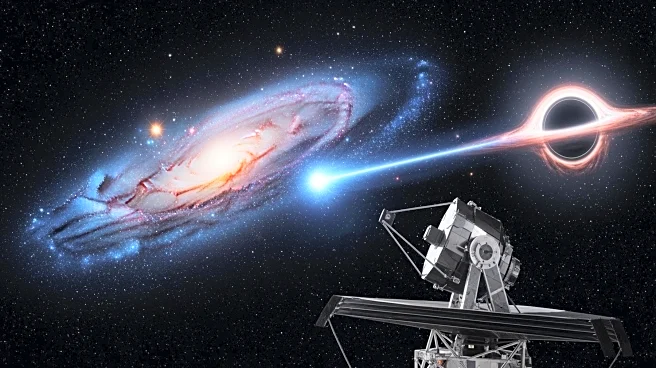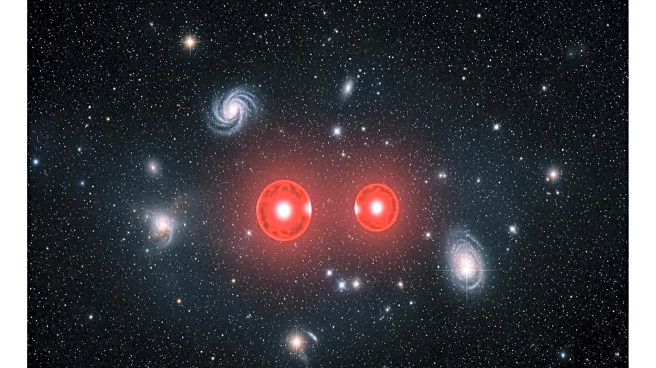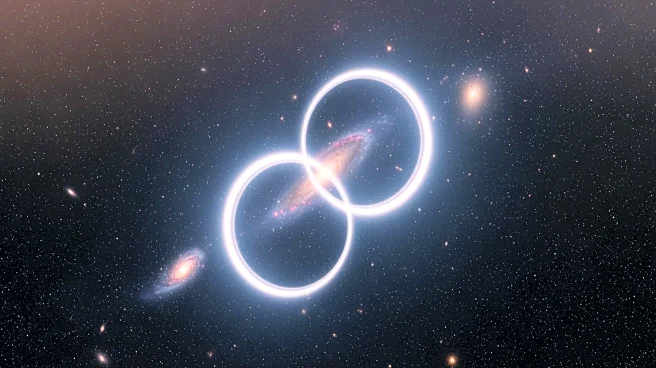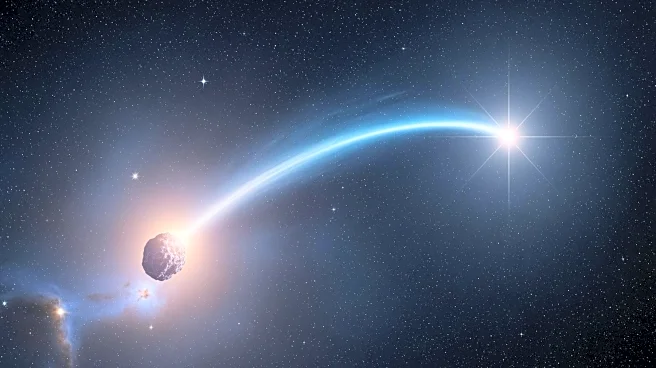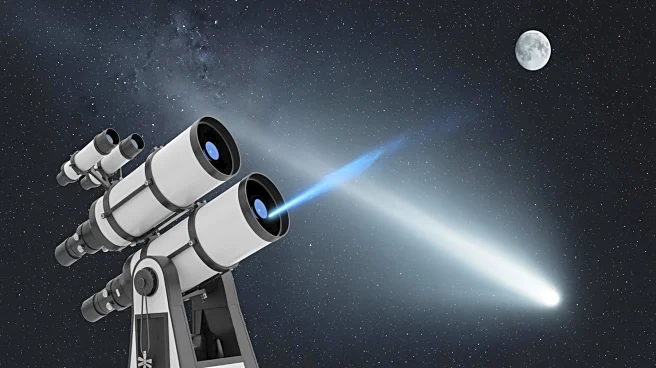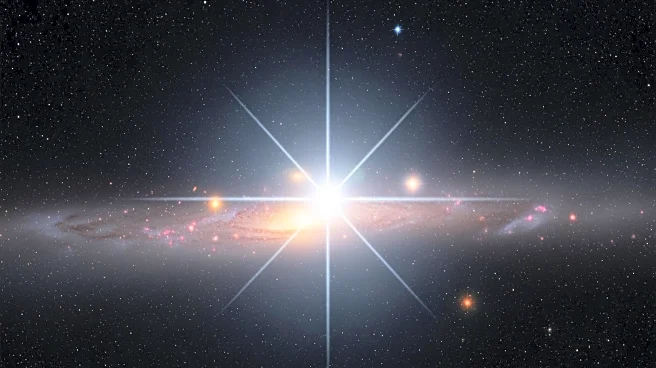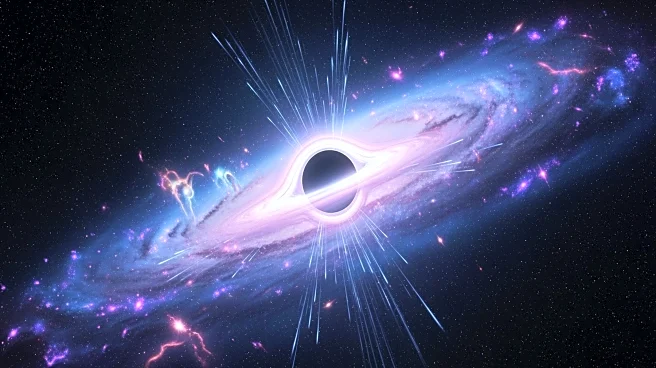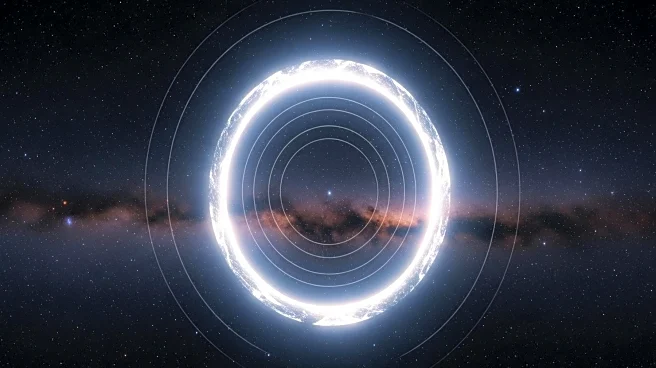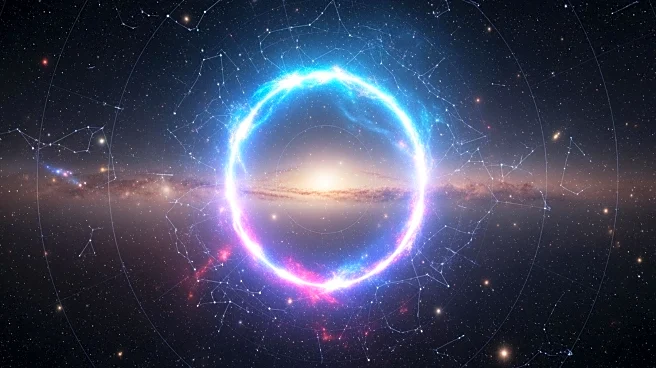What's Happening?
The James Webb Space Telescope (JWST) has provided new images revealing previously unseen details of the jets emanating from the supermassive black hole M87*, the first black hole ever directly imaged.
Located 54 million light-years away in the galaxy Messier 87, these jets are composed of subatomic particles traveling at nearly the speed of light. The JWST images, published in Astronomy & Astrophysics, show the clearest views yet of the massive counter-jet moving in the opposite direction. The M87 jet, shaped like a double-helix and extending 8,000 light-years, has been studied extensively due to its brightness and proximity. The new infrared images captured by JWST's Near Infrared Camera (NIRCam) have allowed researchers to isolate the jet and study its features at four infrared wavelengths, revealing intricate details previously unseen.
Why It's Important?
The discovery is significant for astrophysics as it provides a deeper understanding of jet physics and the behavior of supermassive black holes. The M87 jet serves as an ideal laboratory due to its brightness and proximity, offering insights into cosmic phenomena. Understanding the structure and composition of these jets can help scientists learn more about the dynamics of black holes and their interactions with surrounding cosmic environments. This research could lead to advancements in theoretical models of black hole behavior and contribute to the broader field of space exploration and astrophysics.
What's Next?
Future observations at different wavelengths will continue to enhance the understanding of the M87 jet and its interactions with cosmic surroundings. Researchers aim to build a complete picture of the jet's structure and composition, which could provide further insights into the physics of black holes. Continued study of the M87 jet may also reveal changes in the magnetic fields surrounding the black hole, offering clues about its evolution and impact on the galaxy.
Beyond the Headlines
The study of M87* and its jets could have broader implications for understanding the role of supermassive black holes in galaxy formation and evolution. As researchers uncover more details about these cosmic phenomena, it may lead to new theories about the universe's structure and the fundamental forces at play.
